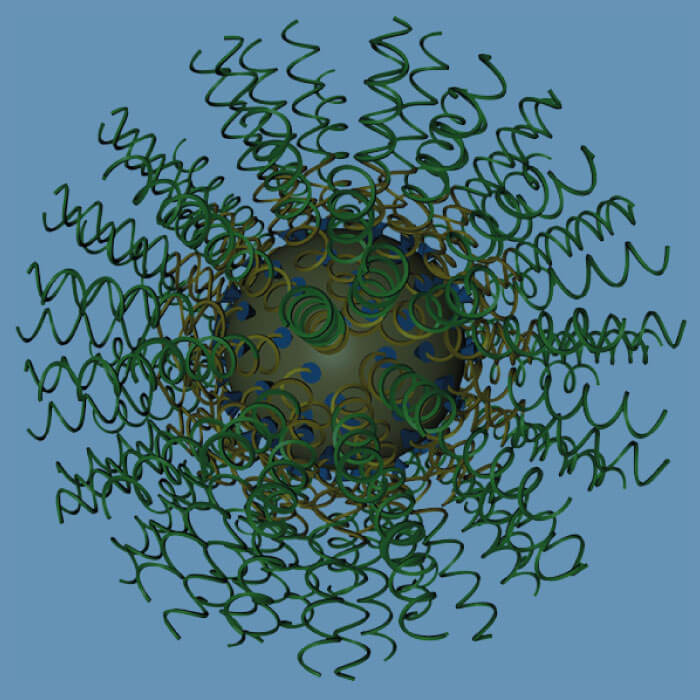Invented in 1996 by the Mirkin Lab at Northwestern University, spherical nucleic acids (SNAs) have the potential to treat a vast array of diseases. Now, a group led by their inventor aims to optimize these nanoparticles for immunotherapies using a new machine learning technique (1). Chad A. Mirkin, Professor of Chemistry at Northwestern University, tells us more...
What are SNAs?
SNAs are nanoparticle structures made by chemically arranging nucleic acids (biomolecules essential for life) on a spherical nanoparticle core. Despite having no known natural equivalent, they are able to interact with living systems in usual ways. Most notably, they enter cells rapidly, and in large quantities, and resist degradation by enzymes.
We’ve observed SNA activity in the brain, a commonly hard-to-access tissue, upon intravenous injection. In addition, they enter the skin, eye, lung, and lymphatic system when topically or locally administered. These properties have made SNAs attractive as gene regulation agents, and as structures for modulating the immune system, making it possible for them to be used as nucleic acid medicines for the last decade.

What can SNAs treat?
SNAs represent an exciting new class of nanomedicines and have a wide scope in terms of clinical applications. With their capacity to shut off gene and cellular activity, we hope to see more SNAs used as personalized therapies for genetic disorders, as well as some types of cancer. Since developing these nanostructures in 1996, seeing them used to their full potential has been a constant goal of mine! In 2011, I founded Exicure, a biotech startup which develops gene regulatory and immuno-oncology therapeutics based on SNA technology. We currently have treatments for psoriasis, spinal muscular atrophy, bowel and lung diseases, as well as ocular diseases in our pipeline.
What are the current advantages and limitations of SNAs?
SNAs are customizable – their size, core composition and DNA/RNA sequences can all be fine-tuned to produce myriad variations. The ability to introduce variability to the design parameters of SNAs means that millions of combinations are possible, all with differing compositions and structures.
It is not currently understood how the different structural parameters collectively influence biological function, and using traditional methods, it would be impossible to study large swaths of the possible combinations. This inspired us to devise a high-throughput method to synthesize large SNA libraries with thousands of candidates and rapidly analyze them to determine which parameters influence immunostimulation.
How will your newly devised machine learning technique help optimize SNAs?
Our machine learning models can analyze SNAs and identify how their structural variation contributes to their efficacy and biological activity. Our novel technique highlights important properties of SNAs, such as their size-dependent ability to stimulate the immune system, which would otherwise be overlooked using more conventional methods. The high-throughput pipeline that we have developed also reveals the “interaction” effects between multiple features of SNAs.
How do you envisage SNAs being used over the coming decade?
SNAs provide a way to exploit what is known about nucleic acid recognition for medicine, without the limitations of linear nucleic acids. Almost all aspects of life derive from nucleic acids, so nucleic acid therapeutics have massive potential! Furthermore, nucleic acids are signals that can be recognized and exploited by the immune system to trigger an immune response. By using nucleic acids, we can target genes linked to disease and immunological receptors in ways to stimulate or suppress immunity. While a few nucleic acid therapeutics have been approved in recent years, issues surrounding their delivery have prevented these therapeutics from reaching their full potential. We believe that SNAs hold the key to not only the challenge of delivery, but also of potency in the way nucleic acids are recognized and processed by the targeted cells and receptors.
References
- CA Mirkin et al., “Addressing Nanomedicine Complexity with Novel High-Throughput Screening and Machine Learning.” Nature Biomedical Engineering




